While Supplies Last: Creating and Key Tips for Success

Table Of Contents
The phrase “while supplies last” is uniquely powerful because it is a call to action that evokes a sense of urgency and scarcity, motivating customers to act quickly before the opportunity slips away. But what exactly does it mean to create a “while supplies last” effect, and how can businesses exploit its potential for success?
In this blog, we will show everything about "While Supplies Last" that helps your business leverage urgency and scarcity to drive sales. So, buckle up as we embark on a journey to uncover the secrets that persuade customers to take action before it's too late.
What Is While Supplies Last?
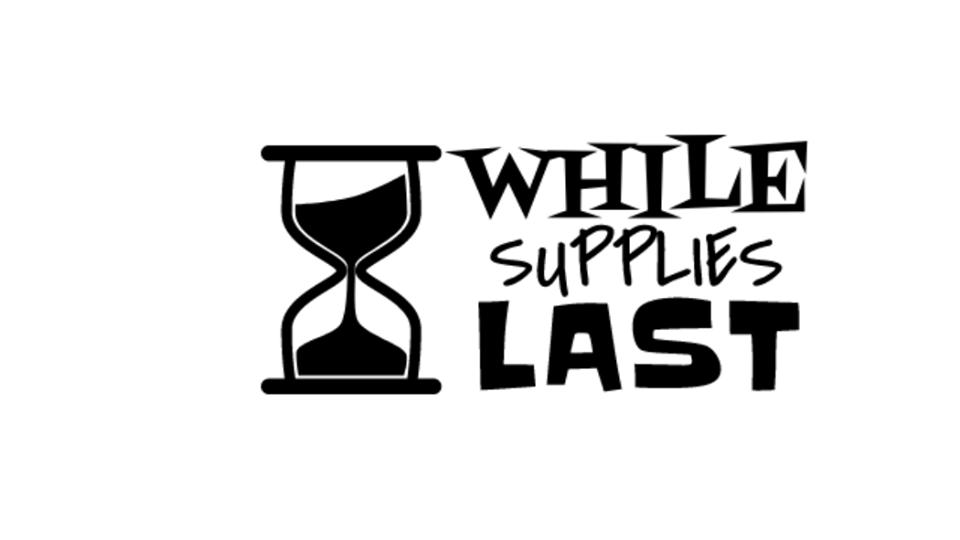
"When Supplies Last" is a marketing term that indicates that a product or offer is available only until the existing inventory is depleted. It's a way for businesses to create urgency and encourage customers to make a purchase decision quickly before the product runs out.
This phrase is commonly used in retail and e-commerce settings to convey the limited availability of a particular item or promotion. It's often accompanied by phrases like "limited stock" or "act fast" to emphasize the situation's urgency.
Businesses can stimulate consumer interest and drive sales by signaling that the product is in high demand or that a limited quantity is available. This scarcity tactic emphasizes the psychological principle that people place a higher value on things perceived as scarce or exclusive.
Why Should You Use Urgency And Scarcity To Drive Sales?
Using urgency and scarcity to boost sales isn't new—it's been around since ancient times. Think about the Phoenician merchants who controlled the lucrative Tyrian purple dye market. They probably used phrases like "while stocks last" or "limited-time offer" to make their product even more desirable.
But why have these tactics stood the test of time? Because they work. And there's research to back it up. Making your product scarce and urgent makes it more appealing to customers, encouraging them to act fast before they miss out.
Scarcity and urgency tactics also combat shopper procrastination. When faced with a limited-time offer or a low-stock alert, customers are more likely to make a purchase decision quickly. This fear of missing out (FOMO) prompts them to act now instead of later.
In short, using urgency and scarcity in your marketing strategy makes your products more desirable and encourages prompt customer action, increasing sales and revenue.
How to Create the “While Supplies Last” Effect
1. Track Your Stock
One of the most straightforward ways to create the "While Supplies Last" effect is by transparently showing shoppers the availability of your products. Implementing tools or features that display real-time stock levels can effectively convey scarcity and urgency to potential buyers.
For instance, take a page from Bliss's playbook. They utilize a simple Shopify app that dynamically showcases the number of products sold and the remaining stock. This real-time display informs customers about the item's popularity and creates a sense of urgency to act before it's too late.

Similarly, Wolf & Badger employ a similar tactic by notifying shoppers when only a few items are left in stock. This subtle yet effective strategy prompts customers to make a purchase decision promptly, fearing they might miss out if they delay.
2. Limit Your Products
Boosting scarcity and inducing a fear of missing out (FOMO) can be achieved by deliberately selling limited quantities of your products. This tactic creates excitement and increases the perceived value of your offerings.
For instance, Converse releases small batches of distinctive shoes every few days. This limited availability entices sneaker enthusiasts, leading to frequent sell-outs within a week.

In eCommerce, a practical approach to implementing this tactic is offering 'limited edition products.' Brands like Converse employ this strategy by releasing small quantities of unique shoes in regular drops. The limited availability of each release fuels demand and prompts swift purchases from eager fans, often resulting in sell-outs within a short timeframe.
3. Use Urgent Words
Beyond implementing specific tactics to create scarcity, the language in your ads, emails, and website content is crucial in driving conversion rates. You can use phrases like "we don't do this often" and "Get it while you can" to evoke a sense of urgency and scarcity, convincing shoppers to purchase immediately.
Harnessing the power of urgent language can effectively drive conversions and capitalize on your audience's fear of missing out (FOMO).
4. Use Flash Sales

If you've ever experienced the frenzy of a department store on Black Friday or Cyber Monday weekend, you understand the power of flash sales in creating urgency.
Flash sales impose a fixed time limit on deals and offers, compelling shoppers to act quickly to avoid missing out on the bargain. The key to flash sales success is building anticipation before the event.
Another effective tactic is to update your flash sale with new deals, and surprise offers throughout the event. This keeps shoppers engaged and curious, driving them to revisit your site to discover the latest offers.
However, the success of flash sales hinges on how well you promote them. Generate hype through your email list and social media channels to ensure a high-impact launch and maximize urgency-driven profits.
5. Create Countdowns
Like facing a ticking bomb, countdown timers in your store can instill a similar sense of urgency in consumers' purchasing decisions. While there's no explosion imminent, customers still feel a subtle pressure to act promptly rather than procrastinate indefinitely.
A classic method of implementing countdown timers is to display them directly on the product page, especially during flash sales. This tactic effectively communicates the limited time available for the deal, urging customers to purchase before it's too late.
However, countdown timers can also be utilized subtly to boost conversions outside sale periods. By adding timers to the shopping cart or checkout process, retailers can discourage shoppers from delaying their purchases, thereby increasing the likelihood of completing the transaction then and there.
If you are running an online store on Shopify, watch the video below to immediately create an effective Countdown Timer for your store!
6. Create Limited Shipping Offers
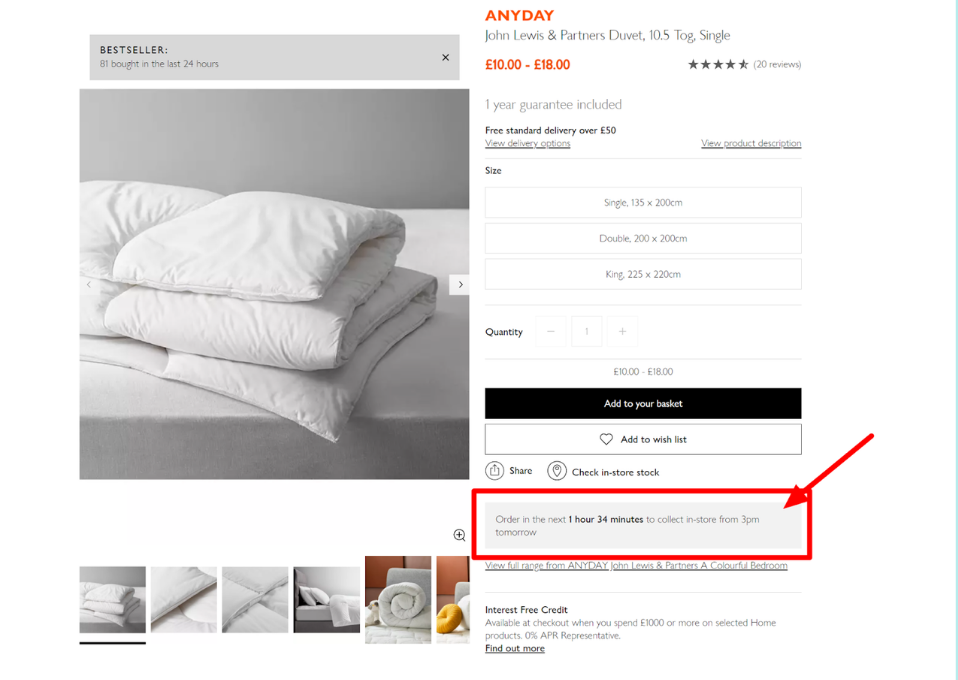
Customers are drawn to fast shipping options, and highlighting a limited-time shipping offer can be a powerful way to entice shoppers and drive conversions. This non-pushy form of urgency not only incentivizes customers to make a purchase decision but also doesn't incur additional costs for the retailer.
Simply highlighting your shipping cut-off times can increase conversions noticeably. Limited shipping offers are particularly effective during the holiday season when shoppers are eager to ensure their gifts arrive on time.
7. Build Thank You Page Deals
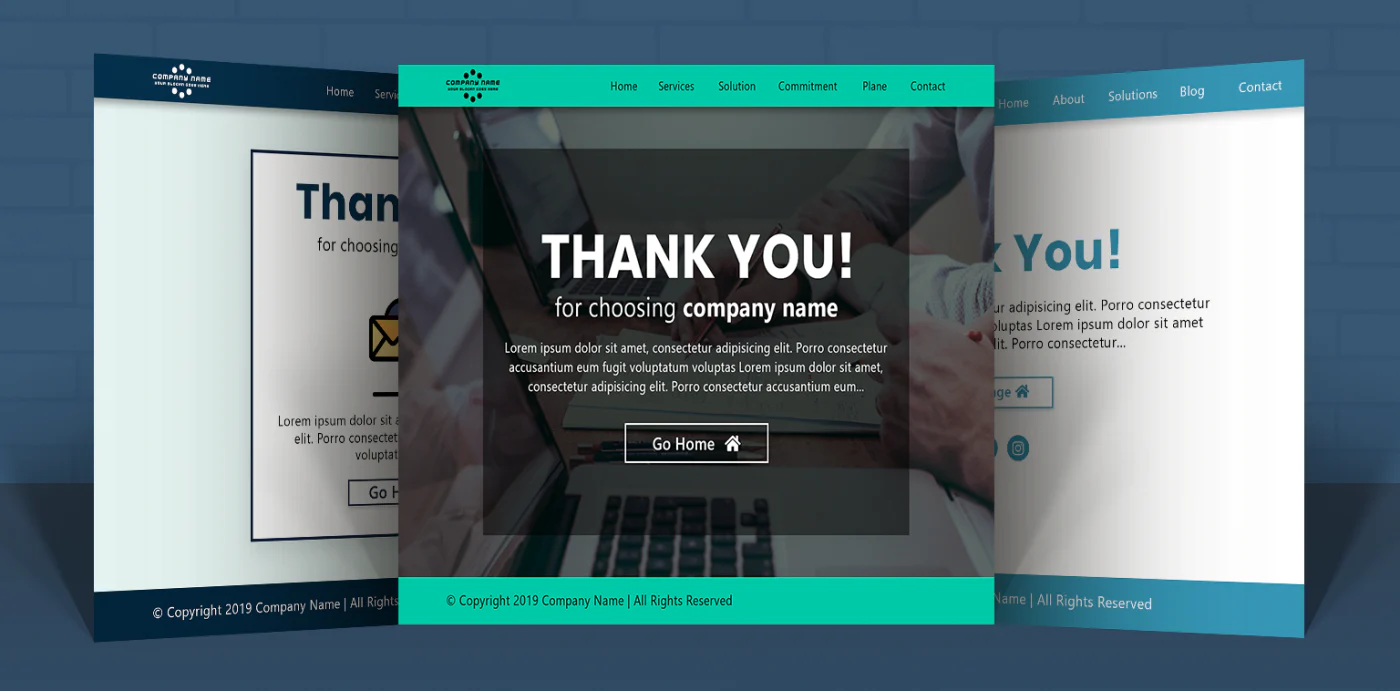
Your thank you page presents a golden opportunity to offer post-purchase cross-sells. Visitors to the thank you page are in peak buying mode, having just completed a purchase. By incorporating scarcity or urgency into your thank you page offers, you can elevate great conversion rates to outstanding levels. A simple pop-up with a timer adds a sense of urgency, encouraging customers to make additional purchases and boost your average order value.
It's astonishing how many brands overlook the potential of thank you page offers, especially considering that industry giants like Amazon and eBay capitalize on this opportunity to maximize profit. Take the chance to capitalize on post-purchase momentum and increase sales by strategically implementing thank-you page deals that leverage scarcity and urgency to drive conversions.
Making a great Thank You Page doesn't have to be complicated. Nowadays, there are lots of tools out there to help. One option is to use third-party apps like EComposer. Many online store owners like it because it's quick, affordable, and gets the job done well.
8. Provide limited-time free shipping

Unexpected shipping costs often lead to shopping cart abandonment, making free shipping a highly enticing offer for customers. You can motivate customers to purchase now and take advantage of the deal by providing free shipping for a limited time.
If you're considering implementing a similar approach for your business, explore popup templates to promote limited-time free shipping offers. By highlighting this attractive benefit, you can effectively reduce cart abandonment rates and encourage customers to seize the opportunity to purchase while the offer lasts.
Read more:
9. Create urgency on the cart page

Customers often only become aware of the total cost of their cart items when they reach the cart page, which can sometimes lead to sticker shock and deter purchases. Creating a sense of urgency or scarcity on the cart page can be highly effective to counteract this.
You can display a low-stock warning or a countdown timer indicating limited supplies or instill a sense of urgency in customers. This encourages them to act quickly to ensure they get their desired items before they run out, effectively combating sticker shock and boosting conversions.
Leveraging urgency on the shopping cart page encourages customers to act immediately and reinforces product scarcity, prompting them to make a purchasing decision before it's too late.
Read more:
- How to Build & Customize Shopify Shopping Cart Page for Better Conversion
- How To Create Sticky Add To Cart
- Guide to Shopify "Add to Cart" Links
10. Advertise your sales deadline on the homepage

When hosting a sitewide sale, it's natural to want many people to notice and shop. Many online stores feature their sales prominently on their homepage to catch visitors' attention.
However, it's equally important to let customers know that your sales are only running for a limited time. Incorporating the sale deadline on your homepage ensures visitors know the urgency and encourages them to act quickly to take advantage of the offer.
For example, Pink Lily effectively highlights its sales on their homepage while including the deadline, ensuring that customers understand the time-sensitive nature of the promotion.
11. Show when one of your products is out of stock
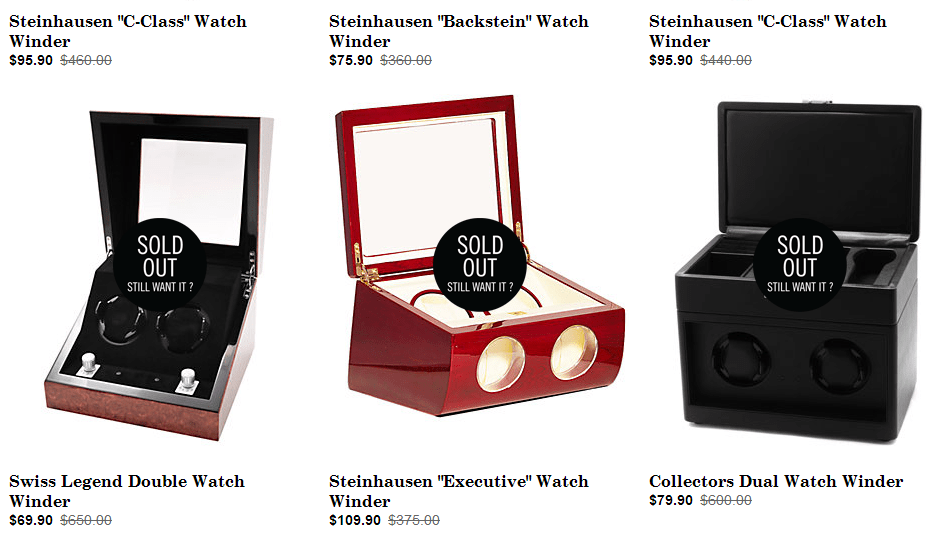
Fear of missing out (FOMO) is a powerful motivator for customers. By drawing attention to the possibility that items may not be available when customers visit next, you instill a sense of urgency, especially when they've found a product they love. This encourages them to take action promptly.
Admitting when you're out of stock for certain items is a subtle yet clever way to drive conversions. When shoppers see that some products are selling out, they become even more motivated to purchase the remaining products they've had their eye on while supplies last.
12. Show how many people are viewing this product

Drawing attention to the fact that others are interested in a product, especially when quantities are limited, is a powerful strategy to increase sales. Creating a sense of competition among shoppers can heighten website visitors' anxiety about missing out, driving them to purchase more quickly.
You can inform shoppers if an item they're viewing is currently in someone else's shopping cart, or you could display how many people are looking at the product. This creates a sense of urgency and fosters a feeling of exclusivity and desirability.
13. Use holidays to drive urgency

Seasonal campaigns are highly effective because urgency is naturally built into them. With specific dates for gift-giving occasions, such as Christmas and Black Friday, customers are inherently motivated to secure their purchases before the deadline.
This sense of urgency isn't limited to major holidays; it can also be leveraged for occasions like Valentine’s Day and Mother’s Day. By aligning promotions and marketing efforts with these holidays, you tap into the heightened sense of urgency that customers feel to find the perfect gifts for their loved ones.
14. Tailor offers to customer actions

Offering customers a personalized experience by tailoring discounts and deals based on their actions can significantly enhance conversion rates. Implementing dynamic offers that vary depending on customers' journey can be more effective than one-size-fits-all promotions.
Dynamic offers allow you to target customers based on their specific behaviors and preferences, offering different deals and incentives to first-time visitors, repeat customers, and loyal patrons. For example, Bailly effectively employs this strategy by offering a 10% discount to second-time visitors, incentivizing them to purchase and fostering loyalty to the brand.
15. Offer daily deals

Daily deals present a compelling alternative to storewide sales, allowing shoppers to snag a great deal on a specific product for a limited time, usually 24 hours. Highlighting limited quantities, such as "Only 2 left," further amplifies the urgency, prompting customers to purchase before the product sells out.
Essential Tips to Create a Sense of “While Supplies Last” Effect
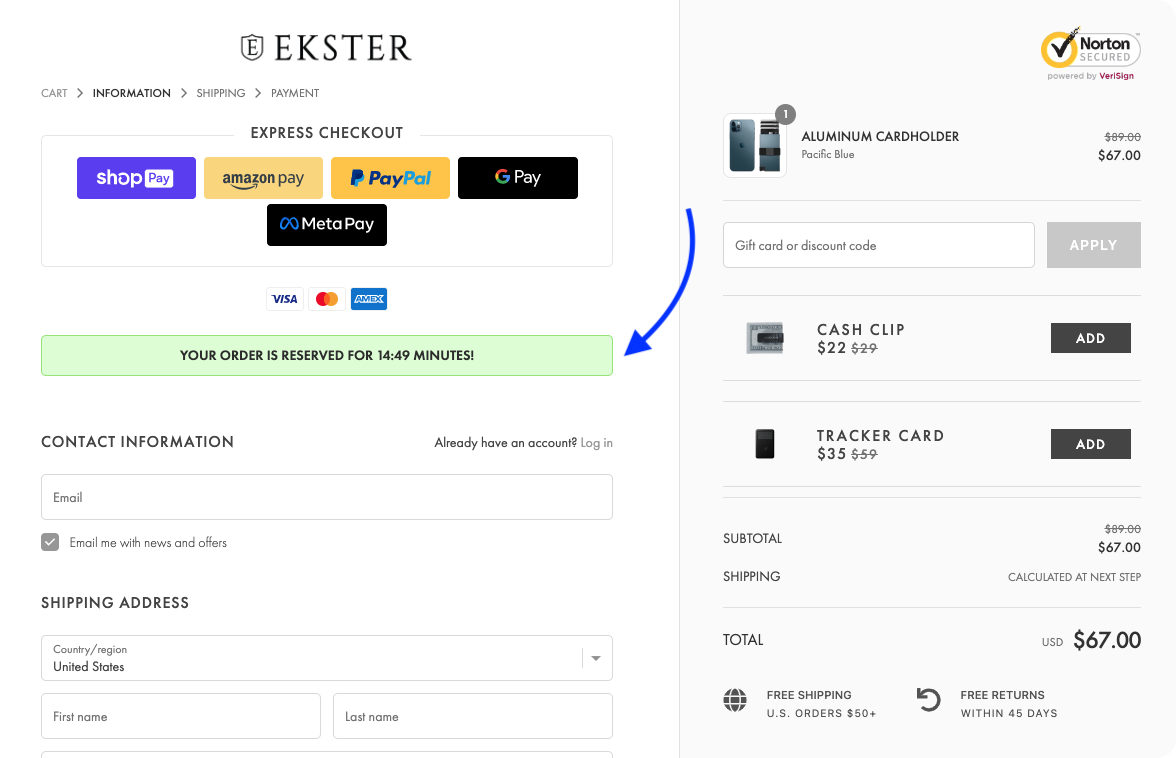
Crafting the perfect "While Supplies Last" effect requires finesse and strategy. Here are key tips to help you create a sense of urgency and scarcity that drives sales:
- Responsible Usage: While urgency and scarcity can be powerful tools, using them responsibly is crucial. Avoid creating false scarcity or misleading customers with exaggerated claims. Honesty and transparency should always be at the forefront of your marketing strategy.
- Avoid Deceptive Practices: Tempting as it may be to exaggerate the scarcity of your products, it's essential to resist the urge. Deceptive practices can damage your brand reputation and erode customer trust. Instead, focus on creating genuine scarcity through strategic inventory management and well-timed promotions.
- Address Underlying Issues: If your products aren't naturally in high demand, using scarcity tactics may only temporarily boost sales. Take the time to address any underlying issues with your product offerings or marketing strategy. Enhancing the value proposition of your products can generate organic demand, making scarcity tactics even more effective.
- Enhance Demand: Building anticipation and desire for your products can amplify the effectiveness of scarcity marketing. Create buzz around upcoming releases, limited-time offers, or exclusive deals to generate excitement among your audience. By cultivating a sense of anticipation, you can drive greater demand and maximize the impact of your "While Supplies Last" campaigns.
Implementing these tips will help you intelligently leverage the power of urgency and scarcity, ensuring that your marketing efforts drive meaningful results while maintaining customer trust and authenticity.
Best Practices To Help You Use Scarcity And Urgency Intelligently

Just because urgency and scarcity are potent marketing tools, that doesn’t mean you should always use them. It shouldn’t be an always-on strategy or a crutch to prop up poor sales.
Moreover, research shows that stock shortages harm ecommerce businesses, with 73% of shoppers saying they feel less loyal to brands after experiencing product unavailability. So, if you keep warning shoppers that supplies are running low, you risk turning them off completely.
With that in mind, here are a couple of best practices to help you use scarcity and urgency intelligently without diluting your messaging:
- Explain why a product or offer is scarce: Is this a limited-edition product? Do you need help to keep up with demand? Are you offering a promotion so attractive you can only afford to run it for a short period? This sort of context brings real meaning to your messaging.
- Use scarcity and urgency to promote best-selling products: The tactics in this article will only work if there’s already some level of demand for your product. Suppose no one wants to buy a specific item that speaks to an underlying problem that won’t be resolved with a time-limited discount.
- Employ urgency and scarcity sparingly: Your goal here is to compel procrastinating shoppers to take action — not to pressure people to buy products they don’t want. Overdo it, and you’ll have many returns on your hands.
Frequently Asked Questions
1. Does scarcity marketing make sense for every store?
Scarcity marketing can be powerful, but it's not a one-size-fits-all strategy. Whether it makes sense for your store depends on factors like your products, audience, and brand values. While it can drive sales for limited-edition or seasonal items, it might not be suitable for stores with evergreen products. Use scarcity tactics wisely to avoid eroding trust with customers.
2. How can overusing scarcity negatively impact the experience of online shoppers?
Overused scarcity tactics can hurt online shoppers in a few ways:
- Breeds skepticism: If every other item seems "limited stock" or has a countdown timer, shoppers might not believe it and ignore the urgency.
- Feels pressured: Constant "buy now or miss out" messages can create frustration and pressure, making shopping stressful.
- Lowers trust: If a store relies solely on scarcity to sell, shoppers might question the product's quality or value.
3. Which is Correct: "While Supply Lasts" or "While Supplies Last"?
The more common and natural phrasing is "While supplies last."
Both are technically correct grammatically, but "while supplies last" is the idiomatic expression most native speakers would use.
In a nutshell
In conclusion, mastering "While Supplies Last" marketing can significantly enhance your eCommerce success. Authenticity and responsibility are paramount when leveraging scarcity and urgency in your marketing strategies. Avoid deceptive practices and ensure your offers are genuine and valuable to your customers.
Embrace the power of "While Supplies Last" marketing, and watch as your online store thrives in the ever-evolving digital marketplace.










![[+15] Best Product To Sell in Women's Day 2024](http://ecomposer.io/cdn/shop/articles/Banner_Blog__Best_Product_To_Sell_for_Women_Day_2024_533x.png?v=1708782734)







0 comments